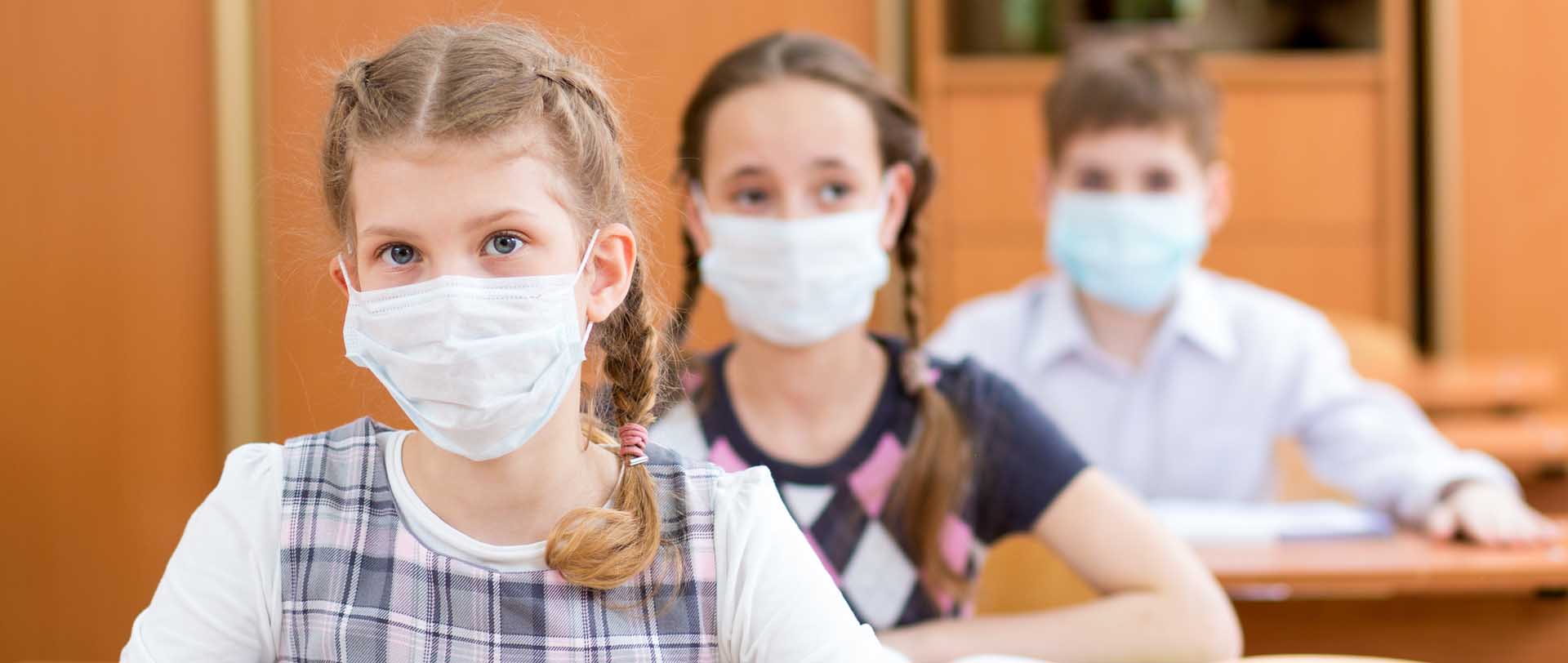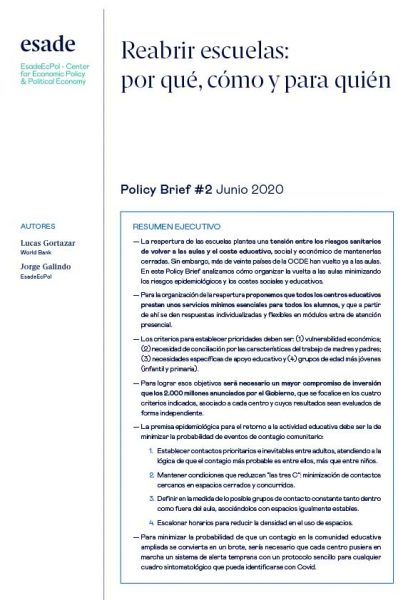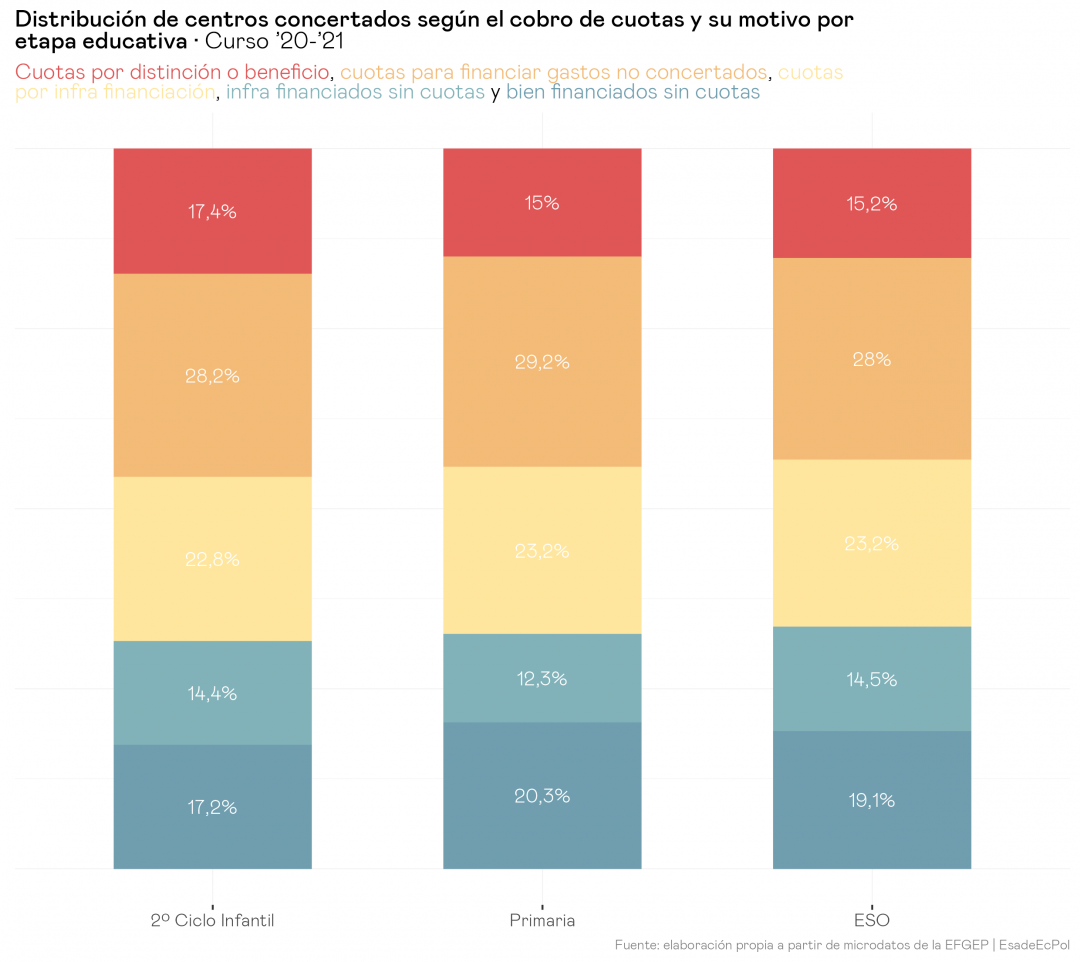
Reopening schools: why, how and for who
Lucas Gortazar, Jorge Galindo
15 Jun, 2020
EsadeEcPol | Policy Brief
Executive summary
- Reopening schools weighs the health risks of returning to the classroom against the educational, social and economic costs of keeping schools closed. However, more than 20 OECD countries have already reopened their classrooms. In this Policy Brief we consider how to organise a return to the classroom – while minimising the epidemiological risks and social and educational costs.
- We propose that all schools provide a minimum essential classroom-based service for all pupils, and then provide individualised and flexible options of additional classroom teaching modules.
- The criteria for priorities should be: (1) low-income homes; (2) need for childcare support due to the terms of employment of the parents; (3) specific needs for educational support; and (4) younger age groups (preschool and primary).
- Achieving these goals will require more than the €2 billion euros announced by the Spanish government, as well as a focus on the four criteria above, and independent evaluation of the results from each school.
- The epidemiological basis for the return to classrooms should be to minimise the possibility of disease transmission events:
- Determine priority and unavoidable contacts between adults, following the logic that the most probable contagion is between adults, rather than between children.
- Ensure conditions that reduce “the three Cs”: minimise close contacts in closed and crowded spaces.
- Define, as far as possible, “constant contact” groups inside and outside the classroom, and provide them with equally stable spaces.
- Stagger timetables to reduce crowding.
To minimise the possibility of a contagion in the educational community becoming an outbreak, each school must introduce an early warning system with a simple procedure for any symptoms that can be identified with Covid.

Read the full article:




